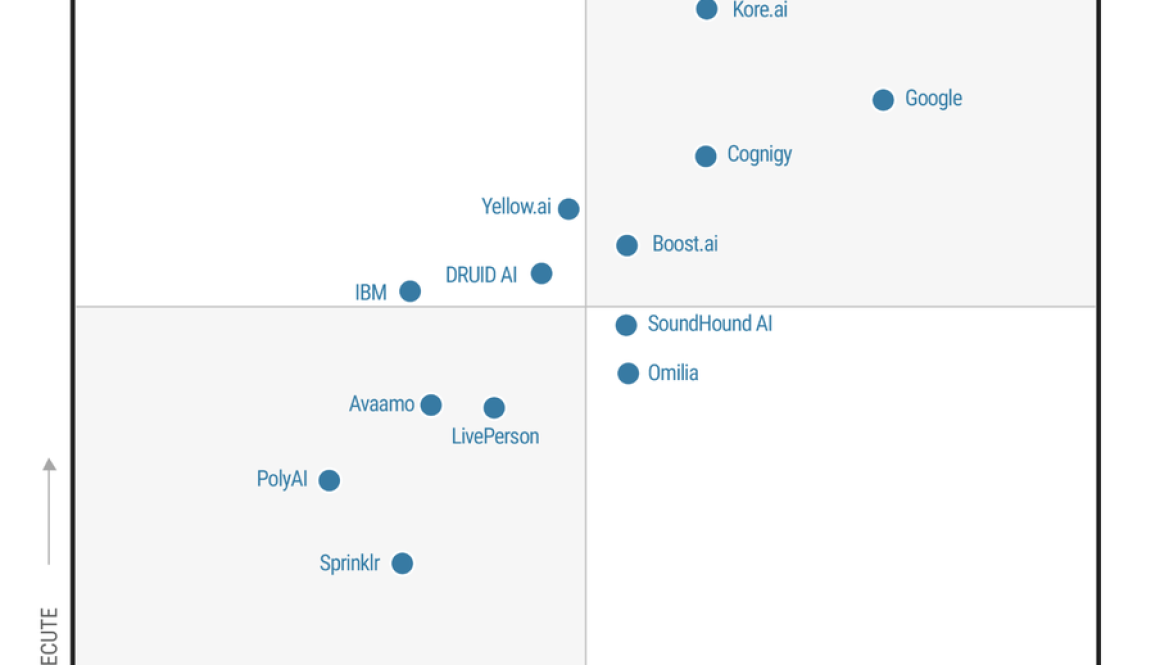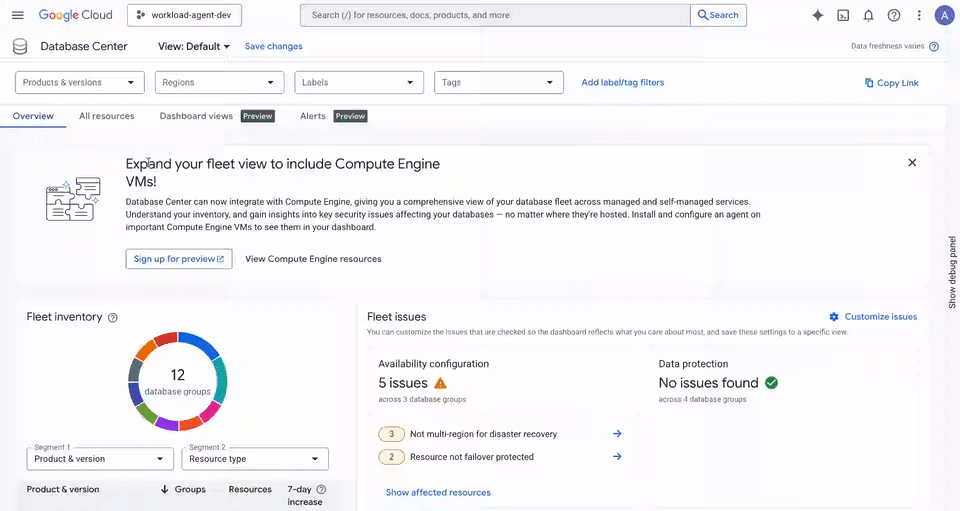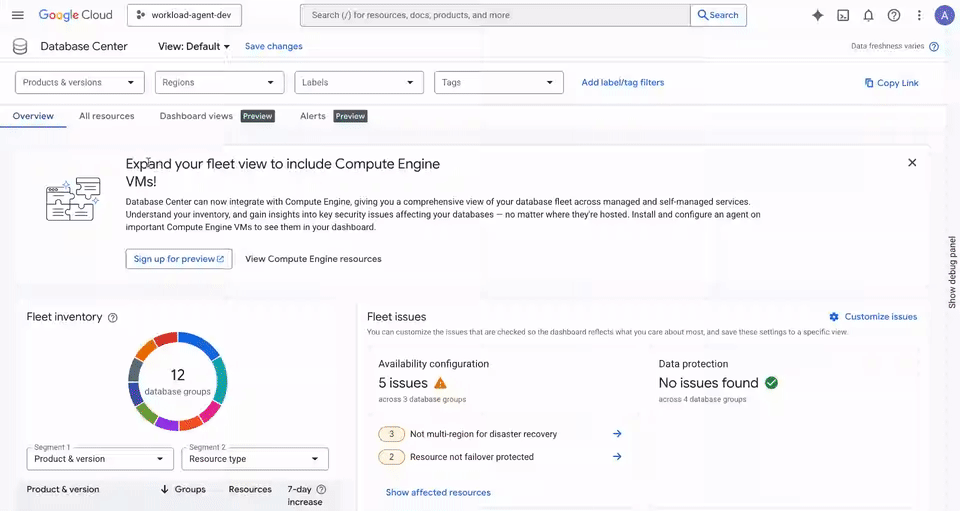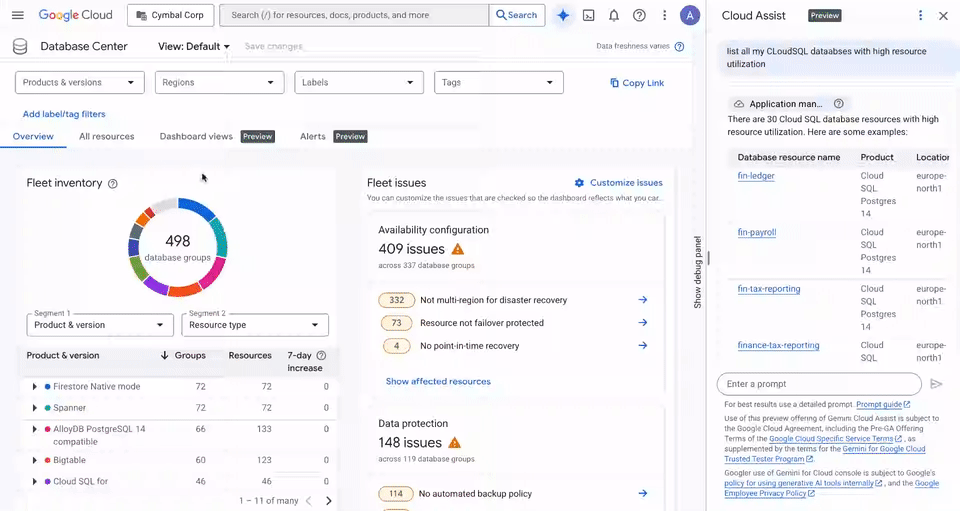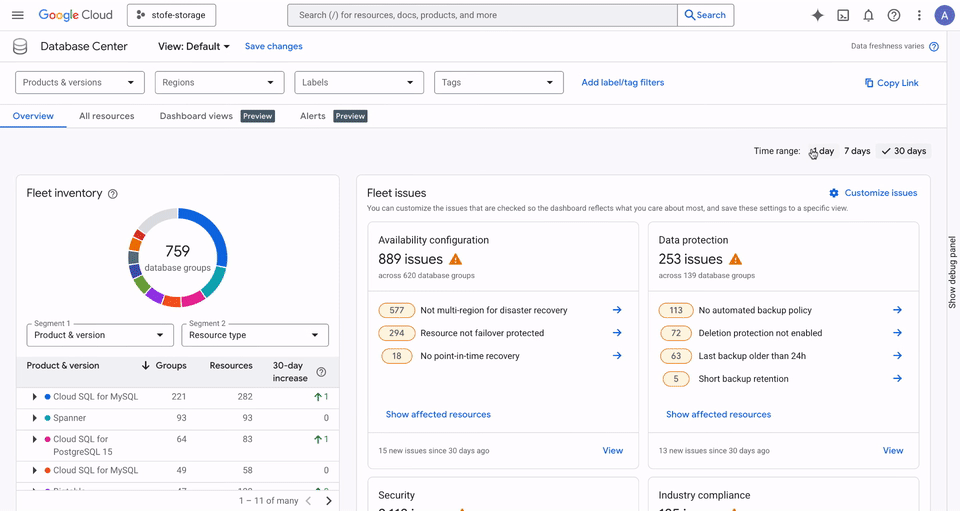GCP – Google is a Leader and positioned furthest in vision in the 2025 Gartner® Magic Quadrant™ for Conversational AI Platforms
Google has been named a Leader in the 2025 Gartner® Magic Quadrant™ for Conversational AI Platforms (CAIP) report, and positioned furthest in vision among all vendors evaluated.
We believe this report marks a pivotal moment for enterprise leaders, signaling a market shift where having a strong vision is no longer an abstract concept but the critical indicator of a platform’s ability to move beyond simple cost-saving automation and deliver transformative business value. We believe Google’s position in this report reflects our core thesis: the future of customer engagement is not just conversational, but agentic—proactively solving problems, personalizing experiences, and creating new revenue opportunities. We see our position as a testament to Google’s AI innovation, global presence and customer momentum that is transforming customer service operations across industries, and enabling businesses to deliver exceptional customer experiences across all their engagement touchpoints and channels.
Download the complimentary 2025 Gartner Magic Quadrant for Conversational AI Platforms
Customer Engagement Suite with Google AI is an end-to-end application that delivers exceptional self-service, agent assistance, and operational insights across customer service and engagement channels. Conversational Agents is the conversational AI platform capability within this suite that enables organizations to create and deploy multimodal, multilingual virtual agents with human-like conversational AI across multiple channels.
Forefront of innovation with Google DeepMind
A winning vision for conversational AI must be grounded in technology that can deliver on its promise. For a decade, enterprises have been promised AI that feels natural and intuitive. At Google we’ve leveraged our extensive experience in search, natural language processing, machine learning, and voice generation to deliver cutting edge conversational capabilities to our customers. This is not the result of a single breakthrough, but the convergence of enterprise-grade innovation in the cloud with cutting-edge innovations from Google DeepMind . We are moving the market past brittle, single-purpose chatbots by embedding multimodal models like Gemini to power our next generation Conversational Agents. This allows businesses to move from merely reacting to customer queries to proactively understanding intent, personalizing interactions with high-fidelity voice, and resolving complex issues in a single, seamless engagement—transforming a support call from a cost center into a brand-building experience.
Building on Google DeepMind’s innovation, we have incorporated the latest Gemini capabilities into Conversational Agents including Gemini Flash, our most efficient model designed for speed and low-cost. Google DeepMind has been pushing the frontiers of audio generation with models that can create high quality, natural speech from a range of inputs, including text, tempo controls and voices. By integrating the latest technology into our speech model and transcription voice capabilities, our Agents provide enhanced emotional understanding with high definition voices for more personalized and natural interactions.
The deployment of these conversational AI innovations extend beyond the Customer Engagement Suite. Purpose-built vertical AI agents including the Food Ordering and Automotive AI Agents leverage these innovations to deliver exceptional conversational experiences for end customers. The industry leading conversational search and multimodal capabilities in Google Agentspace and Vertex AI Search are enabled by Gemini.
Global momentum across conversational use cases
The multilingual and multimodal capabilities of Customer Engagement Suite with Google AI enable an always-on engagement for customers, scaling self-service across geographies and timezones with over 100 available languages and dialects. Global customers delivering real-world impact from our Conversational AI capabilities include:
- Best Buy: This retailer generates conversation summaries in real time, allowing live agents to give their full attention to understanding and supporting customers, resulting in an over 60 second reduction in average call time and after-call work. They’ve also improved customer experiences by significantly reducing transfer and repeat call rates.
- Definity: Adopting gen AI in its call center operations has already led this leading Canadian P&C insurance company to a 20% improvement in call handle time, a 15% productivity increase, and automated authentication for 75% of customers.
- Bouygues Telecom: The virtual sales agents of this French telecom provider have handled over 50,000 conversations since their launch.
Our library of pre-built agents, industry-specific services accelerators, extensive global partner network, and compliance certifications ranging from HIPAA to FedRAMP High enable us to support customers across various industries, including some of the most highly regulated like Financial Services and Government. With built-in feedback mechanisms, data grounded in enterprise truth, and granular controls, we are committed to responsible AI and enterprise-grade security and compliance.
Riding the AI wave through a unified AI stack
AI is raising the bar for how organizations engage with customers, with speed, intelligence and personalized support no longer a ‘nice to have’ when it comes to customer expectations. Gartner predicts that by 2028, 50% of the customer service organizations will have adopted AI agents to improve customer self-service capabilities1.
Our vision is to deliver proactive, personalized customer experiences with AI that knows the user, anticipates their needs, and engages them seamlessly across every touchpoint. With our Next Generation Conversational Agents, we enable highly engaging customer experiences that deliver human-like, natural voices, high degree of comprehension and personalization to help the AI agents adapt during conversations. It simplifies how AI agents are built by providing a new collaborative builder experience that uses AI to create AI agents and access to our continuously expansive integrations across data stores and actions.
Unlike point solutions, Customer Engagement Suite with Google AI is an end-to-end application with Conversational Agents integrating seamlessly alongside the Agent Assist, Conversational Insights and Google Contact Center as a Service (CCaaS) products. Customers can maximize business impact with a full contact center transformation by implementing the complete suite, or they can expedite time to value by integrating the individual Conversational AI products in their existing contact center environment. Underpinned by purpose-built AI stack, our customers benefit from our fully integrated, supercomputing architecture specifically designed for gen AI and other AI workloads.
Next steps
We believe being positioned as a Leader in the Gartner® Magic Quadrant™ for Conversational AI Platforms underscores Google’s proven ability to deliver real business value, and we believe being positioned furthest in vision highlights Google’s AI innovation and potential to transform customer experiences with AI agents and the next generation of Customer Engagement Suite.
To download the full 2025 Gartner Magic Quadrant™ for Conversational AI Platforms report, click here.
1. Gartner, Innovation Insight: Augmenting Conversational AI Platforms With Agentic AI – Uma Challa, June 26, 2025
Gartner, Magic Quadrant for Conversational AI Platforms – Gabriele Rigon, Justin Tung, Bern Elliot, Arup Roy, Adrian Lee, Uma Challa, August 13, 2025
Disclaimer: Gartner does not endorse any vendor, product or service depicted in its research publications, and does not advise technology users to select only those vendors with the highest ratings or other designation. Gartner research publications consist of the opinions of Gartner’s research organization and should not be construed as statements of fact. Gartner disclaims all warranties, expressed or implied, with respect to this research, including any warranties of merchantability or fitness for a particular purpose. This graphic was published by Gartner, Inc. as part of a larger research document and should be evaluated in the context of the entire document. The Gartner document is available upon request from Google.
GARTNER is a registered trademark and service mark of Gartner, Inc. and/or its affiliates in the U.S. and internationally, and MAGIC QUADRANT is a registered trademark of Gartner, Inc. and/or its affiliates and are used herein with permission. All rights reserved.
Read More for the details.

